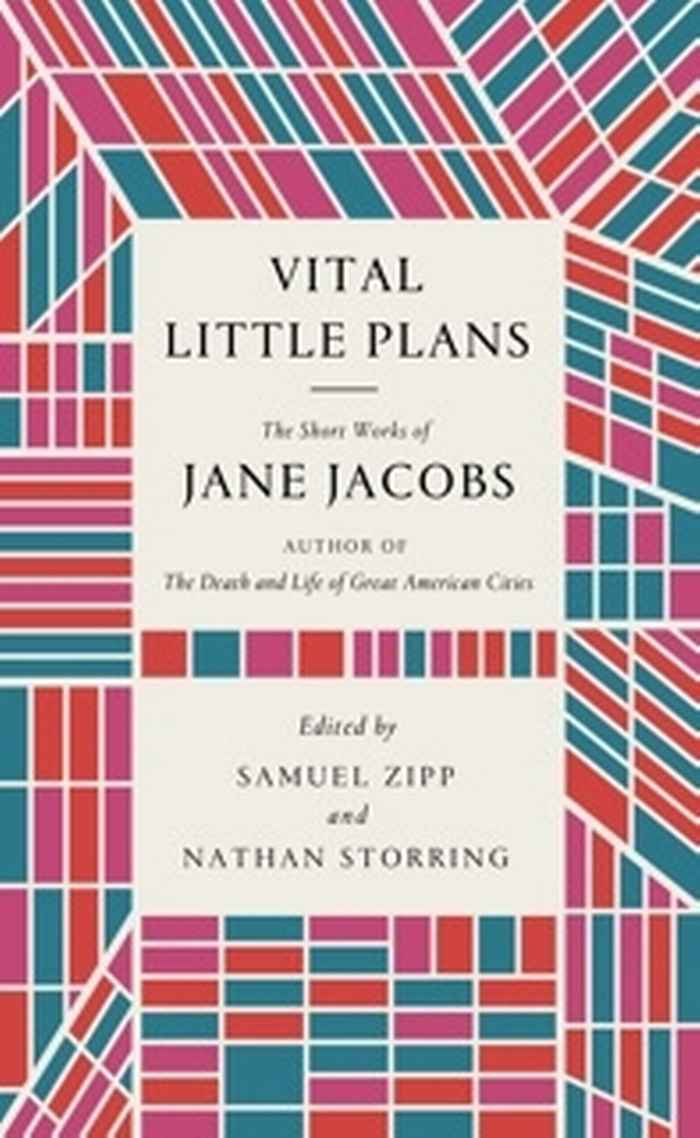Vital Little Plans: Seeing Jane Jacobs Whole - by visiting Associate Professor Samuel Zipp
Jane Jacobs
The famous urbanist, author of course, of the classic work for which we all know her, The Death and Life of Great American Cities, came to the Netherlands at the invitation of Queen Beatrix to give a speech at the Royal Palace. Not surprisingly, Jacobs admired Amsterdam - it was a “joy to be in this splendid city,” she said in the speech she gave that night.
Amsterdam
Jacobs revered Amsterdam for its history of independence and endurance over the centuries, for its many influential “workaday innovations” in holding back the waters surrounding it, and for being one of the great exemplars of that old medieval saying, “City Air Makes Free.” But she said little to nothing about the particular urban virtues for which Amsterdam is now known around the world and which one might have expected the author of Death and Life to appreciate. Nothing about its density, its feeling of unplanned unpredictability, its intense re-use of historic buildings, nothing about canals and bridges and even, despite what we know of Jacobs’ own city transportation choices, nothing about bicycles. The chief virtue she saw in Amsterdam, she said, and that she saw in all great cities—such as Toronto and New York, her two home cities--was not physical, but economic. By way of illustration, she told a story about being young and traveling abroad for the first time. She discovered a kind of mundane delight in being able to walk into a bank in a European city and hand a check to the bank teller and feel confident that the money would reach her bank in New York.
Great web of trust
Back in the early capitalist economies of Europe, the merchants of Amsterdam, she said, had played a chief role in inventing the tradition of “routine safeguards” that made up what she called a “great web of trust”—those many interlinked interdependencies that allowed the transactions of trade to flourish. All great cities nurtured this “web of trust” and were in turn nurtured by it. Cities were great to the degree that they were creators of such cultural practices. This idea is quintessentially Jacobsian—the “great web of trust” is as fitting as any a phrase for summing up her characteristic take on the three great subjects of her writing life: cities, economies, and morals. It is both abstract and pragmatic, iconoclastic in its celebration of the taken-for-granted, surprising for its optimism and faith in the everyday workings of human societies, and, we might even say, a tad credulous about the larger effects of the global capitalist systems in which great cities have long held the commanding heights.
Reimagining Jacobs’ ideas
We no longer live, needless to say, in that time. One of the chief reasons to return to Jacobs now, and to this collection of shorter works spanning her entire career as a writer, is to help us reimagine Jacobs herself as something more than a symbol of urban sorrow or urban triumph. Readers tend to cherish Jacobs for a series of scenes from this period: Death and Life’s opening “attack on current city planning and rebuilding”; the “eyes on the street” that make cities safe; her four “generators of city diversity” (density, mixed uses, short blocks, and cheap old buildings); and of course the much-beloved “sidewalk ballet.” But this volume shows that the episodes and ideas for which she is still best remembered are the prelude to a much greater body of work. She spent the rest of her long life, in six other books, dramatically expanding the ideas she had debuted in Death and Life. In the process she forged a unique take on the interrelated life of cities, economies, and morals, one that readers can watch evolve in the pages of our new collection of her short works, Vital Little Plans.
Much of that work was jumpstarted by another of her unique observations, one that led, I’d say, to her vision of the Amsterdam-ian “web of trust,” but one that is sometimes overlooked. The city, she surmised at the close of Death and Life, was an always-unfolding problem in handling “organized complexity.” Rather than a simple two-variable problem like in the physical sciences or a million-variable problem of statistics, Jacobs saw the city as something akin to an ecosystem with many moving parts, each with their own relationships to one another. This idea would become a touchstone of her later work, informing all her investigations of economic and social life, but it had its roots in her earliest interests in the workings of cities at the micro scale. Cities lived or died by that “web of trust” established between people in their everyday working lives, but in order to preserve the open-ended possibility inherent in vital cities, societies had to recognize that this trust depended on a fragile system of morality. Webs of trust, systems of symbiosis, self-organizing networks; these were the shapes of her thought across her career, the way she saw cities, economies, and morals. These are the ideas for which Jacobs is less remembered, but they are the ideas that her work as a critic of modern planning prepared her to take on.
Samuel Zipp
Is Associate Professor of American Studies and Urban Studies at Brown University and is a cultural and urban historian with particular interest in 20th century cities, United States cultural and political history since World War II, the built environment, and nonfiction writing. Zipp visited the Centre for Urban Studies in May 2016. His co-edited book (with Nathan Storring) Vital Little Plans: The Short Works of Jane Jacobs has recently been published.
